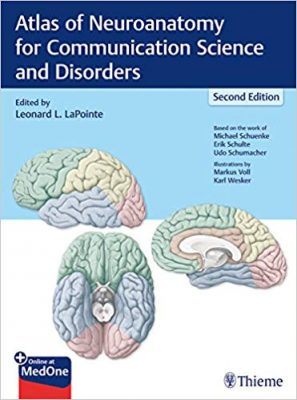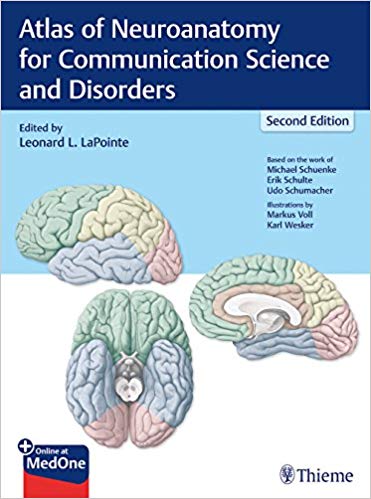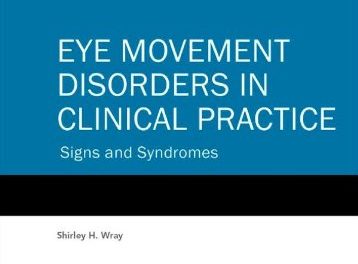 Editor: Leonard L. La Ponte – based on the work of Michael Schuenke, Erik Schulte, and Udo Schumacher.
Editor: Leonard L. La Ponte – based on the work of Michael Schuenke, Erik Schulte, and Udo Schumacher.
Illustrators: Markus Voll and Karl Vesker
Publisher: Thieme – 235 pages
Book Review by: Nano Khilnani
When things go wrong with the machinery of our brain, our ability to communicate goes awry, writes Dr. Joseph Duffy in the Foreword to this book. He is emeritus consultant and professor in the division of speech pathology in the department of neurology at Mayo Clinic and Mayo Clinic College of Medicine and Science in Rochester, Minnesota.
He states that knowing neuroanatomy can be fundamental to speech language pathologists, and those in related fields of communication science. This atlas contains more than 450 illustrations or almost two of them on average per page. Leonard L. LaPointe is one of today’s foremost teachers and practitioners of brain-based communication disorders. The rich illustrations are based on the recently-published second editions of the Schuenke atlases that have content on:
- Clinic-pathological effects
- Cognition
- Higher cortical function
- Spinal cord
- Structural damage
This is a large page-size (12” x 9”) atlas as most such good books are, and should be. Most of its illustrations are in full color, very clear, crisp, sharp, and detailed. The images and accompanying text are organized around seven chapters that we name below:
- Introduction and Brain Basics
- General Anatomical concepts
- Head, Skull, Neck Anatomy
- Anatomy of the Brain and Nervous Systems
- Cranial nerves
- Blood Vessels, Vascular System
- Functional and Dysfunctional Systems
You can access additional content online by going to www.MedOne.Thieme.com and inputting the access code found on the inside front cover of this book.
In this book, you will find coverage on among other topics, aphasia and neuromotor speech disorders, and communication impairments caused by traumatic brain injury, cognitive decline, degenerative disorders of the nervous system, multisystem blast injuries, and swallowing disorders. It provides critical information on the important connection between neuroanatomy and functional system required for treating patients with communication
Let’s look at the outline of the contents of a typical chapter. Chapter 6 entitled Blood Vessels, Vascular System on pages 143 to 166 contains the following topics. We present to you only the first three of the ten topics and their subtopics to give you examples of the extent of coverage
- 6.1. Overview of the Human Vascular System
- 6.1.1 Schematic representation if the Circulatory System
- 6.1.2 Basic Functional Diagram of the Circulatory System
- 6.1.3 Overview of the Principal Arteries in the Systemic Circulation
- 6.1.4 Overview of the Principal Veins in the Systemic Circulation
- 6.2 Arteries of the Head, Overview and External Carotid Artery
- 6.2.1 Overview of the Arteries in the Head
- 6.2.2 Branches of the External Carotid Artery
- 6.2.3 Branches of the External Carotid Artery Typical Anatomy and Variants
- 6.2.4 Overview of the Branches of the External Carotid Artery
- 6.3 External Carotid Artery: Anterior, Medial, and Posterior Branches
- 6.3.1 Facial Artery, Occipital Artery, and Posterior Auricular Artery and Their Branches
- 6.3.2 Superior Thyroid Artery, Ascending Pharyngeal Artery and Their Branches
- 6.3.3 Origin of the Ascending Pharyngeal Artery: Typical case and Their Variants
- 6.3.4 Lingual Artery and Its Branches
This book indeed has extensive as well as intensive coverage of the brain-based system of nerves as it closely relates to the human communication system. This enables clinicians to determine the sources and causes of dysfunctions as they occur. For this purpose alone, without going to into other purposes, this is a very important and highly valuable textbook that all students and practitioners in the field of communication and speech pathology should have.
Editor:
Leonard L. La Ponte is Francis Eppes Distinguished Professor in the School of Communication Science and Disorders at Florida State University in Tallahassee, Florida.
Based on the work of:
Michael Schuenke, MD PhD is affiliated with the Institute of Anatomy at Christian Albrecht University in Kiel, Germany
Erik Schulte, MD, PhD is affiliated with the Department of Functional and Clinical Anatomy at Johannes Gutenberg University in Gutenberg, Germany.
Udo Schumacher, MD, FRCPath, CBiol, FBiol, DSc. is affiliated with the Institute of Anatomy II: Experimental Morphology Center for Experimental Medicine at University Medical Center Hanburg-Eppendorf in Hamburg, Germany.
Illustrators: Markus Voll and Karl Vesker






